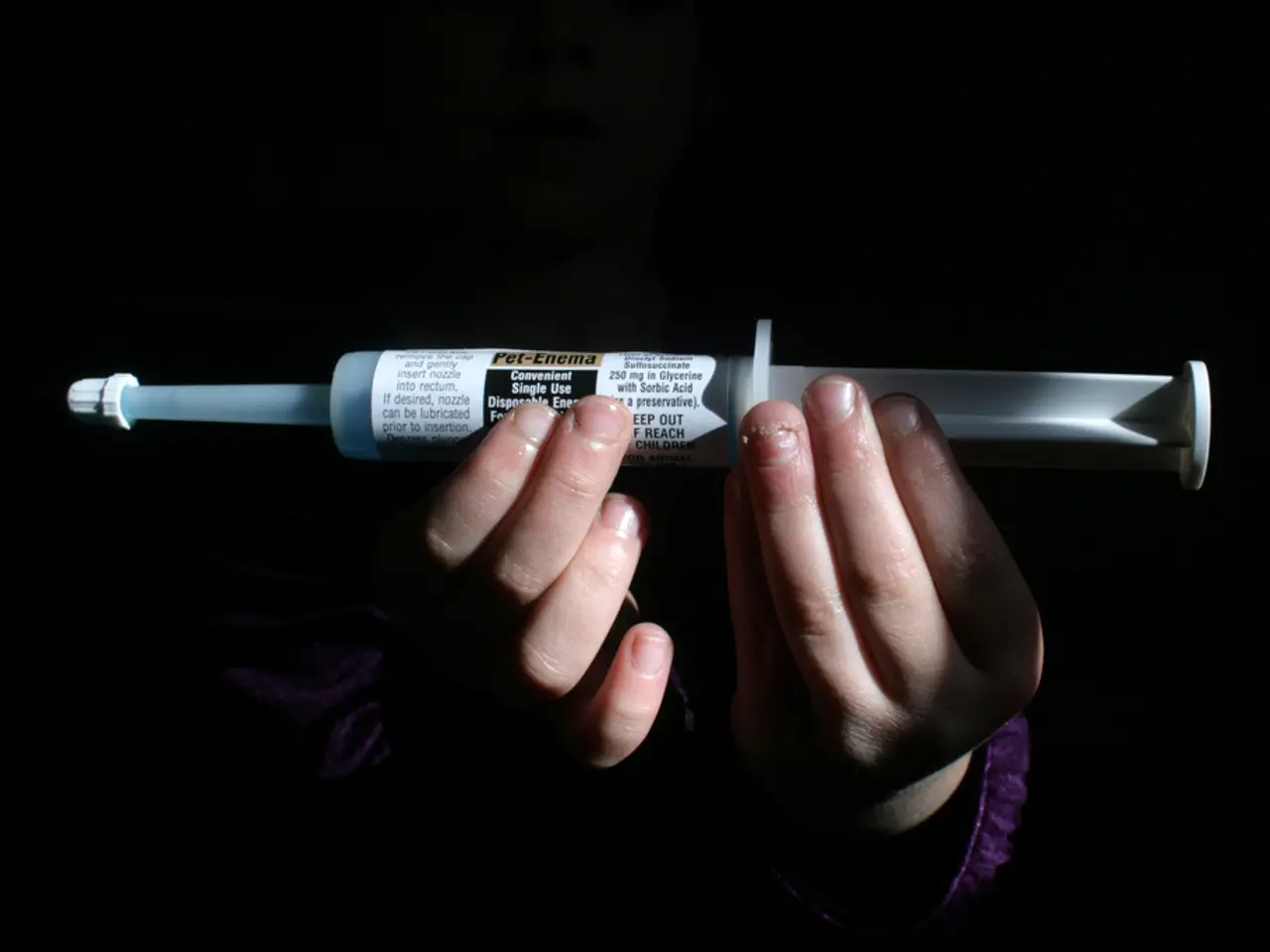Fear of Physical Contact: Essential Information on Haphephobia
In a world where human connection is essential, some individuals struggle with a unique anxiety disorder called Haphephobia, or the fear of being touched. This condition, also known as chiraptophobia, aphenphosmphobia, and thixophobia, affects a significant number of people, with estimates suggesting that over 20% of adults in the United States experience a phobia at some point in their lives [1].
Haphephobia manifests in various ways, with symptoms including immediate fear or anxiety when touched, panic attacks, avoidance of situations where a person may be touched, and a general sense of anxiety and depression [2]. The condition can significantly impact a person's quality of life, but there is hope. Treatment options, tailored to each individual, can help those affected regain control and improve their coping strategies.
Doctors use the symptoms listed in the Diagnostic and Statistical Manual of Mental Disorders (DSM-5) to diagnose phobias, and haphephobia is no exception [3]. Common treatment options primarily involve psychotherapy techniques, especially those used for specific phobias [4].
Cognitive Behavioral Therapy (CBT) is a key approach, helping individuals identify and challenge irrational thoughts related to their fear, and develop healthier thinking patterns [4]. Exposure Therapy, the main evidence-based method for specific phobias, involves gradual, controlled exposure to the fear source—in this case, touch—starting from very mild forms and progressively increasing intensity to desensitize the person and reduce anxiety over time [4].
Anxiety Management Skills, such as deep breathing or relaxation exercises, are often taught alongside therapy to help manage symptoms when exposed to fear triggers [4]. While no drugs are specifically approved by the FDA for treating specific phobias, doctors may prescribe antidepressants or anti-anxiety medications to help manage symptoms if needed [4].
In some cases, therapies like Eye Movement Desensitization and Reprocessing (EMDR), typically used for trauma-related issues, may be applied, especially if a traumatic experience underlies the phobia [4]. Virtual Reality Therapy, although still understudied, can simulate touch-related scenarios for exposure in a controlled environment [4].
Working with mental health professionals, such as certified therapists experienced in phobia treatment, can guide the process effectively [4]. It's important to note that because haphephobia can vary in severity and impact, individual assessment and a personalized approach are key for successful outcomes [5].
Factors that may increase the likelihood of developing haphephobia are not specified, but it's known that having a neurotic personality or a tendency towards behavioral inhibition can be a risk factor for developing anxiety and phobic disorders [2]. The condition may be caused by experiencing or witnessing a traumatic event that involved being touched, or by observing a loved one express fear or avoidance of being touched [5].
Other mental health conditions, such as OCD, PTSD, or general anxiety disorder, can be related to haphephobia [5]. Phobias, including haphephobia, respond very well to treatment, and using daily coping mechanisms can reduce their impact on a person's life, helping them overcome the phobia in the long-term [6].
If the fear persists for over 6 months, leads to an intense avoidance of everyday situations, and gets in the way of personal or work life, seeking medical help is strongly advised [6]. Effective treatments for phobias include cognitive behavioral therapy (CBT), exposure therapy, virtual reality exposure therapy, medications such as beta-blockers or antidepressants, breathing exercises and other relaxation techniques, practicing mindfulness, exercise, self-care, and family support [6].
Remember, it's never too late to seek help and regain control over your life. With the right treatment and support, haphephobia can be managed, and a fulfilling life can be within reach.
[1] American Psychiatric Association. (2013). Diagnostic and Statistical Manual of Mental Disorders, Fifth Edition. Arlington, VA: American Psychiatric Publishing. [2] National Institute of Mental Health. (2021). Anxiety Disorders. Retrieved from https://www.nimh.nih.gov/health/topics/anxiety-disorders/index.shtml [3] National Institute of Mental Health. (2021). Phobias. Retrieved from https://www.nimh.nih.gov/health/topics/phobias/index.shtml [4] National Institute of Mental Health. (2021). Treatments for Phobias. Retrieved from https://www.nimh.nih.gov/health/topics/phobias/treatments.shtml [5] Mayo Clinic. (2021). Specific phobias. Retrieved from https://www.mayoclinic.org/diseases-conditions/specific-phobias/symptoms-causes/syc-20366631 [6] Anxiety and Depression Association of America. (2021). Specific Phobias. Retrieved from https://adaa.org/understanding-anxiety/specific-phobias
- The predictive symptoms of haphephobia can be found in the Diagnostic and Statistical Manual of Mental Disorders (DSM-5), which allows doctors to make a diagnosis.
- Science plays a significant role in managing haphephobia, with evidence-based methods such as Cognitive Behavioral Therapy (CBT) and Exposure Therapy being common treatment options.
- In addition to traditional therapies, data suggests that newer approaches like Virtual Reality Therapy could be beneficial for managing haphephobia by simulating touch-related scenarios.
- Mental health conditions such as depression, anxiety, and post-traumatic stress disorder (PTSD) can be related to haphephobia, making it crucial to consider a holistic approach to treatment and care.
- Effective management of haphephobia involves a combination of therapeutic interventions, such as CBT and Exposure Therapy, as well as self-care practices, like mindfulness, exercise, and family support, to achieve long-term success in health-and-wellness and mental-health.




